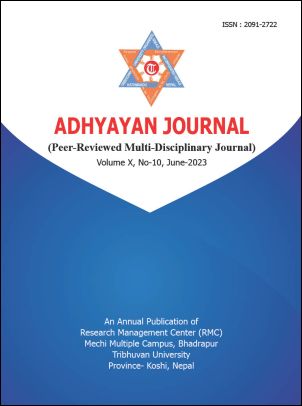Does the Income from Tourism and Remittances Really Matter for Economic Growth? Evidence from the Nepalese Economy
DOI:
https://doi.org/10.3126/aj.v10i10.57344Keywords:
Tourism, remittance, ARDL model, consistency, economic growthAbstract
This study investigates the effects of tourism and remittances on Nepal's Gross Domestic Product (GDP). It is based on secondary information acquired from Nepal's several economic surveys and publications from the Nepal Rastra Bank. It spans 34 fiscal years, from 1987/88 through 2020/21. The study employs descriptive and exploratory research designs.Descriptive statistics, unit root testing, Augmented Dickey-Fuller test, ARDL bound testing approach, heteroscedasticity test, serial correlation test, and CUSUM and CUSUM squares test of stability analysis are some econometrics instruments utilized.The GDP, remittances, and income from tourism are found to be correlated over the long term. In the long run, remittances and tourism revenue increase Nepal's GDP, but there is no discernible effect in the short run. The GDP increased by 0.794 and 0.157 percent for every one percent increase in tourist and remittance income. Therefore, the impact of tourism income is more significant than the impact of remittance income on GDP. Therefore, policymakers can employ tourism to promote Nepal's long-term economic growth.




